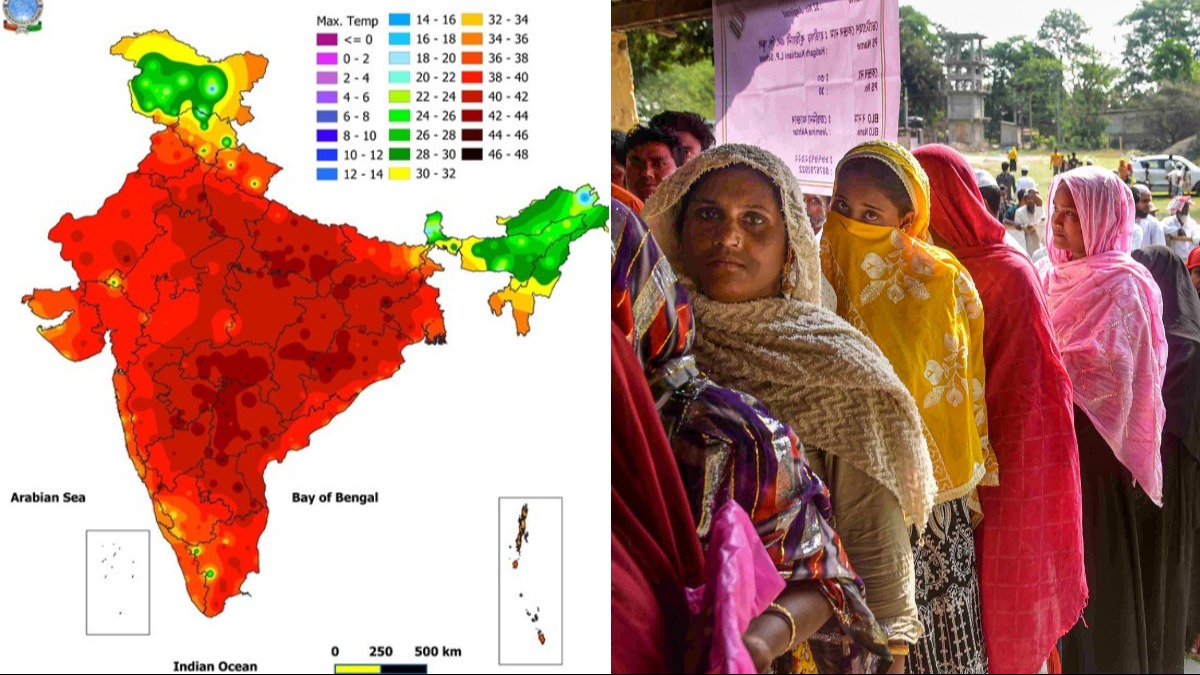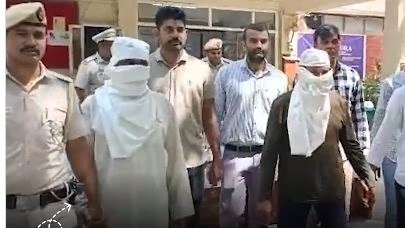India is currently celebrating the festival of democracy - the Lok Sabha elections, drawing global attention. With the onset of April comes the scorching heat and intense heatwaves, casting a profound impact on the electoral process. As the election fervor intensifies, so does the heat, causing concern due to a decrease in voter turnout in the initial phases. Climate Trends, an organization working on weather and environmental issues, has conducted an extensive study on the reasons behind the rising temperatures and heatwaves.
But why is the heat and the heatwave increasing?
The Indian Meteorological Department (IMD) has already mentioned that this year, the number of days with heatwave conditions from April to June could double. This implies the duration, which used to span 4 to 8 days, could extend to 10 to 20 days this time. The year is poised to be hotter than 2023, which has already been recorded as the warmest year in history, hinting at an even warmer climate ahead.
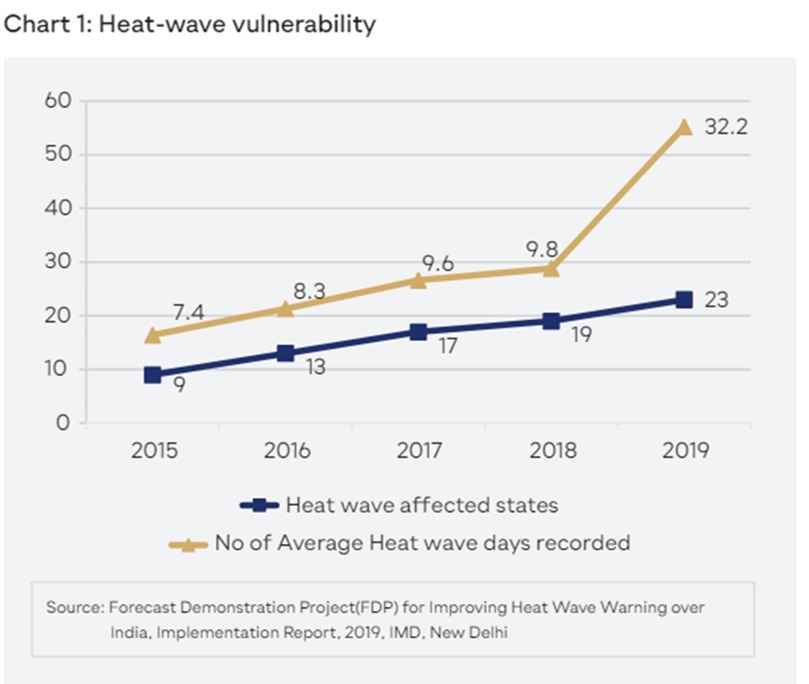
Source: aajtak
Some regions have already experienced soaring temperatures reaching up to 47 degrees Celsius, while most areas are battling between 42 to 45 degrees. In April, the number of days with heatwave conditions hit an unprecedented 15-day streak, particularly affecting the humid eastern regions and the peninsular areas surrounded by water. Kerala has been hit by record heatwaves, leading to 10 reported fatalities. Kerala State Disaster Management Authority notes that, as of April 22, 413 cases have been documented relating to heat-related troubles like intense sunlight, rashes, and heatstrokes. Similarly, in Odisha, the heat has hospitalized 124 individuals across 16 districts.
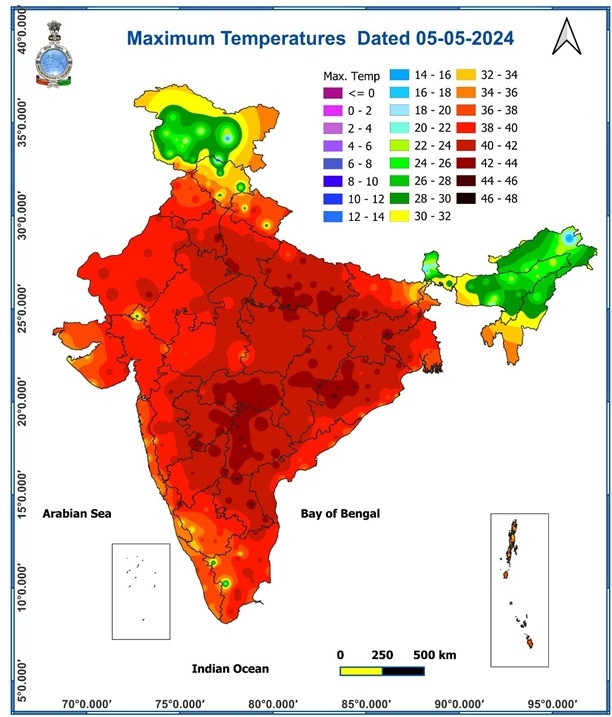
Source: aajtak
The deficient pre-monsoon rains and thunderstorms in April are being linked to rising temperatures. Additionally, nationwide rainfall has declined by 20%. April 2024 witnessed precipitation in the southern peninsular regions amounting to 12.6 mm, marking it as the fifth-lowest since 1901 and the lowest since 2001. The ensuing lack of rains in the east and northeast India regions is equally concerning, showing a 39% shortfall. IMD's Director General Sanjay Mahapatra attributes this to persistent anticyclone conditions in Oman and neighboring areas, including Andhra Pradesh, which have hindered proper climatic developments. Consequently, warmer ground level winds have been unchecked, leading to a rise in temperatures. However, continued western disturbances have helped stave off heatwave effects in the northwestern plains. Additionally, lingering effects of the El Niño phenomenon have further intensified the heatwaves.
Record Heatwave in April 2024
The number of heatwave days in April 2024 was the highest in the past 15 years.
Ganges region of Bengal and Odisha were the most affected this month over the past nine years (2017-2024).
With 18 days of heatwave, April 2024 saw the second-longest period in the past 15 years, following 2016's 21 days.
The eastern and northeast regions experienced their highest minimum temperatures since 1901, with a deviation that can be considered at 1.78 degrees Celsius.
Peninsular India registered the second-highest mean and maximum temperature figures since 1901.
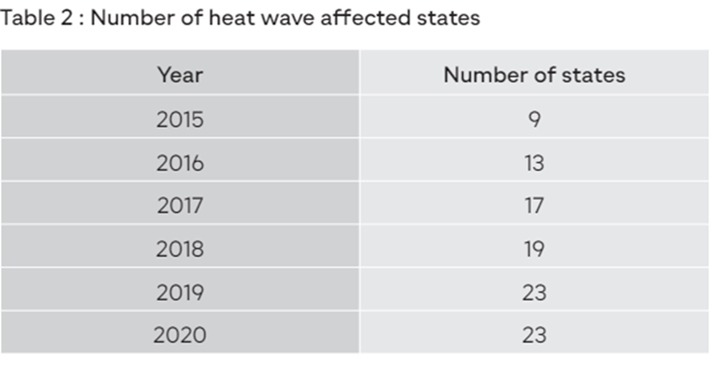
Source: aajtak
Dr. Friederike Otto, Scientist and Senior Lecturer at Grantham Institute for Climate Change and the Environment, stated that heatwaves are among the deadliest weather conditions in India, rapidly increasing in a warming world. Until fossil fuel usage worldwide ceases, the normalization of such extreme events will likely continue to escalate.
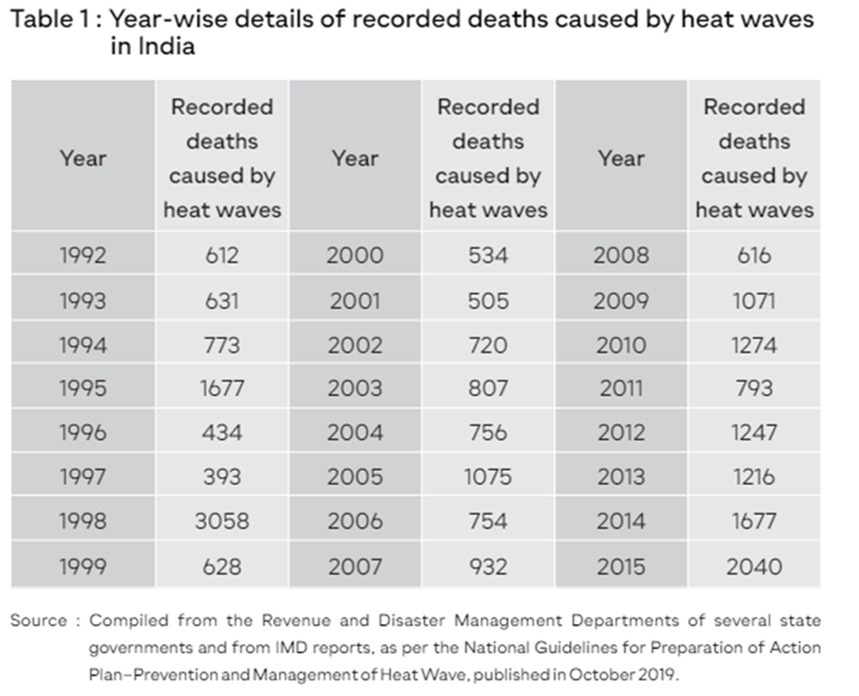
Source: aajtak
What will May bring, the peak of the summer season? Regions such as southern Rajasthan, western Madhya Pradesh, Vidarbha, Marathwada, and Gujarat are expected to experience higher than average temperatures. Parts of Rajasthan, eastern Madhya Pradesh, Punjab, Haryana, Chandigarh, Delhi, Uttar Pradesh, Chhattisgarh, interior Odisha, coastal regions of West Bengal, Jharkhand, Bihar, interior northern Karnataka, and certain areas of Tamil Nadu and Andhra Pradesh may also face increased temperatures ranging between 2 to 4 days above normal.
